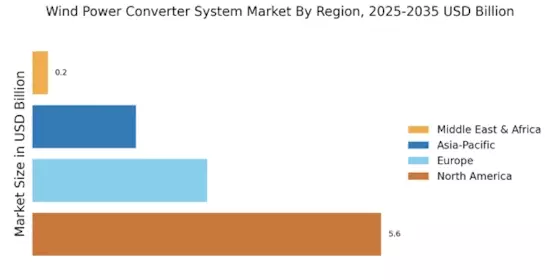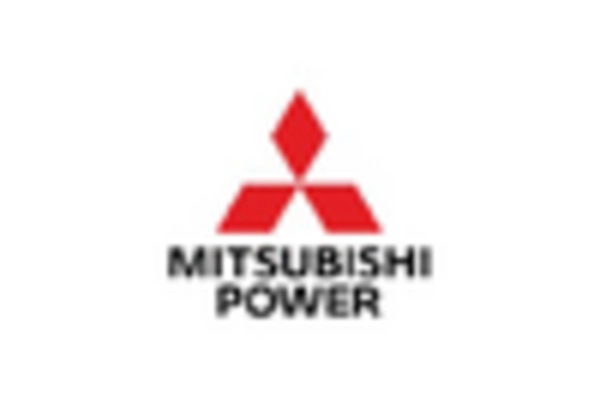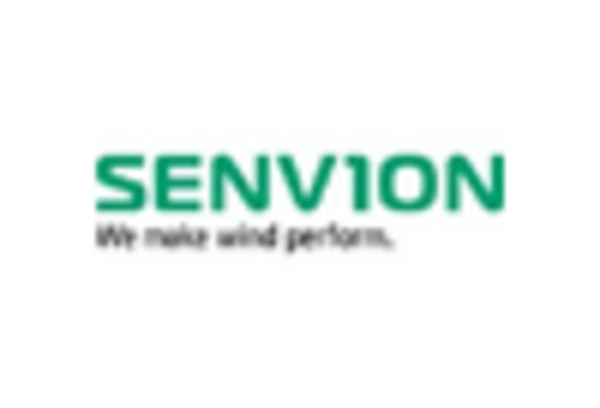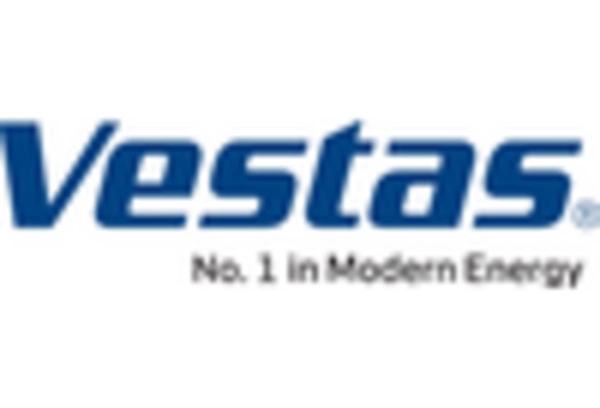Government Incentives and Policies
The Wind Power Converter System Market is significantly influenced by government incentives and supportive policies aimed at promoting renewable energy. Many countries have implemented favorable regulatory frameworks, including tax credits, subsidies, and feed-in tariffs, to encourage investments in wind energy infrastructure. As of 2025, it is anticipated that these policies will lead to an increase in installed wind capacity, further driving the demand for efficient converter systems. The alignment of national energy strategies with international climate commitments is likely to bolster the market, as governments seek to transition away from fossil fuels. This supportive policy environment creates a conducive atmosphere for the growth of the wind power converter system market, indicating a promising outlook for stakeholders.
Rising Demand for Renewable Energy
The Wind Power Converter System Market is experiencing a surge in demand driven by the global shift towards renewable energy sources. As nations strive to meet their carbon reduction targets, the adoption of wind energy is becoming increasingly prevalent. In 2025, it is estimated that wind energy will account for approximately 25 percent of the total electricity generation mix in several regions. This growing reliance on wind power necessitates efficient converter systems to optimize energy capture and conversion, thereby propelling the market forward. Furthermore, the increasing awareness of climate change and the need for sustainable energy solutions are likely to further enhance the demand for wind power converter systems, indicating a robust growth trajectory for the industry.
Growing Investment in Wind Energy Projects
Investment in wind energy projects is a critical driver for the Wind Power Converter System Market. As financial institutions and private investors recognize the long-term benefits of renewable energy, funding for wind projects has seen a notable increase. In 2025, global investments in wind energy are projected to exceed 100 billion dollars, reflecting a strong commitment to expanding renewable energy capacity. This influx of capital not only facilitates the development of new wind farms but also necessitates the deployment of advanced converter systems to ensure optimal energy conversion. The increasing financial backing for wind energy initiatives is likely to create a robust demand for wind power converter systems, thereby enhancing market growth prospects.
Technological Innovations in Converter Systems
Technological advancements play a pivotal role in shaping the Wind Power Converter System Market. Innovations such as enhanced power electronics, advanced control algorithms, and improved grid integration techniques are revolutionizing the efficiency and reliability of wind power converters. For instance, the introduction of multi-level converters and direct-drive systems has shown potential in reducing energy losses and improving overall system performance. As of 2025, the market is projected to witness a compound annual growth rate of around 10 percent, largely attributed to these technological breakthroughs. The continuous evolution of converter technologies not only enhances energy conversion efficiency but also supports the integration of larger wind farms into existing power grids, thereby fostering market growth.
Rising Awareness of Environmental Sustainability
The Wind Power Converter System Market is benefiting from a heightened awareness of environmental sustainability among consumers and businesses alike. As climate change concerns escalate, there is a growing preference for clean energy solutions, including wind power. This shift in consumer behavior is prompting companies to invest in renewable energy sources to enhance their sustainability profiles. By 2025, it is expected that a significant number of corporations will commit to using 100 percent renewable energy, further driving the demand for wind power converter systems. The increasing emphasis on corporate social responsibility and sustainable practices is likely to create a favorable environment for the wind power converter system market, suggesting a positive trajectory for future growth.


















Leave a Comment